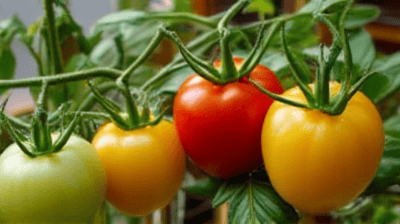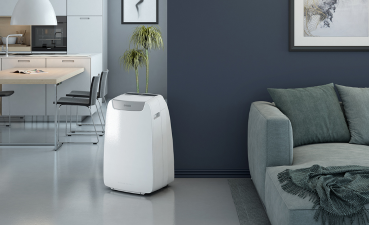Urban gardening has gained immense popularity as more people seek to grow their own food in limited spaces. Among the many vegetables that can be cultivated in containers, tomatoes stand out as a favorite for many gardeners. Growing tomatoes in pots not only allows you to enjoy fresh produce right from your balcony or patio, but it also provides the flexibility to optimize your gardening efforts in confined areas.

Understanding the Benefits of Growing Tomatoes in Pots
Before we delve into the specifics of growing tomatoes, it’s essential to understand the advantages of container gardening, particularly for tomatoes:
1. Space Efficiency
Containers allow you to utilize limited spaces effectively. Whether you have a small balcony or a tiny backyard, pots enable you to grow your favorite plants without the need for a traditional garden bed.
2. Flexibility
With potted tomatoes, you can easily move your plants to take advantage of sunlight or protect them from adverse weather conditions. This mobility is particularly beneficial in urban environments where conditions can change quickly.
3. Improved Drainage
Pots often provide better drainage than traditional garden beds, reducing the risk of waterlogging and root rot. This feature is crucial for tomatoes, which thrive in well-drained soil.
4. Easier Pest Management
Growing tomatoes in pots can make pest management more straightforward. It is easier to monitor and treat potted plants, especially when they are placed on patios or balconies where pests may be less prevalent.
5. Accessible Gardening
Container gardening is accessible for individuals of all ages and physical abilities. Potted plants can be placed at eye level, reducing the need for bending or stretching.
Choosing the Right Tomato Varieties
When it comes to growing tomatoes in pots, not all varieties are created equal. Understanding which types will thrive in a container is critical for achieving a successful harvest. Here are the main types of tomatoes and recommendations for container gardening:
1. Determinate vs. Indeterminate Tomatoes
Tomatoes are classified into two main categories based on their growth habits:
-
Determinate Tomatoes: These varieties grow to a specific height and produce fruit all at once. They tend to be bushy and are well-suited for containers. Examples include 'Roma', 'Patio Princess', and 'Bush Early Girl'.
-
Indeterminate Tomatoes: These varieties continue to grow and produce fruit throughout the growing season. They often require staking or support but can still be grown in pots. Suitable examples include 'Celebrity', 'Sweet 100', and 'Brandywine'.
For pot gardening, determinate varieties are often recommended since they require less space and can be easier to manage.
2. Compact and Patio Varieties
Several tomato varieties are bred specifically for container gardening. These compact varieties remain small and are ideal for growing in pots. Some popular choices include:
- Tiny Tim: A cherry tomato variety that grows only 12 to 18 inches tall.
- Patio Princess: A determinate variety that produces small, sweet tomatoes and is perfect for small spaces.
- Tumbling Tom: A cascading variety that is perfect for hanging baskets or balcony planters.
When selecting varieties, consider your local climate, the amount of sunlight available, and your personal taste preferences.
Selecting the Right Containers
Choosing the right container is a crucial step in successfully growing tomatoes in pots. Here are factors to consider when selecting containers:
1. Size Matters
Tomatoes need ample space for their root systems to develop. The recommended pot size for medium to large tomato varieties is at least 5 gallons. For smaller varieties or patio tomatoes, a 3-gallon pot may suffice.
2. Material Options
Containers come in various materials, each with its advantages:
- Plastic: Lightweight and affordable, plastic pots are easy to move and maintain moisture but may require additional insulation in extreme temperatures.
- Clay (Terra Cotta): These pots are porous, allowing air and moisture exchange. However, they can dry out more quickly and are heavier.
- Fiberglass or Resin: These durable options mimic the appearance of clay but are lighter and often have better insulation properties.
3. Drainage is Essential
Proper drainage is critical to prevent waterlogging. Ensure that your containers have drainage holes at the bottom. If they do not, you can drill some or choose to elevate the pots slightly to allow excess water to escape.
4. Color Choice
Consider the color of your pots, especially in hot climates. Dark-colored pots absorb more heat, which can lead to stress on the plants. Choose lighter colors if you live in an area with intense sunlight.

Preparing the Soil
The quality of soil you use in your pots significantly impacts your tomato plants’ health and productivity. Here are some tips for preparing the right potting mix:
1. Use Potting Mix
Avoid using garden soil in containers, as it can compact and hinder drainage. Instead, opt for a high-quality commercial potting mix designed for container gardening.
2. Amend for Nutrients
Tomatoes are heavy feeders and require nutrient-rich soil. Consider amending your potting mix with organic fertilizers, such as compost or well-rotted manure. You can also use a balanced slow-release fertilizer to provide essential nutrients throughout the growing season.
3. Maintain pH Levels
Tomatoes prefer slightly acidic soil with a pH between 6.0 and 6.8. You can purchase pH testing kits to check your soil and add amendments as necessary, such as sulfur to lower pH or lime to raise it.
Planting Your Tomatoes
Now that you have chosen the right varieties, containers, and soil, it is time to plant your tomatoes. Follow these steps for successful planting:
1. Timing is Crucial
Tomatoes are sensitive to frost and thrive in warm temperatures. Wait until the last frost date in your area to plant your tomatoes outdoors. This timing varies depending on your climate, so check local gardening resources for specific dates.
2. Planting Seeds vs. Transplants
You can grow tomatoes from seeds or buy young transplants. Starting with seeds requires more time and care but can be rewarding. If you are short on time, purchasing healthy transplants from a nursery is a suitable option.
a. Starting Seeds Indoors
If you choose to start with seeds, begin sowing indoors about 6 to 8 weeks before the last frost date. Use seed trays or small pots filled with seed-starting mix. Keep the soil moist and provide adequate light to encourage healthy growth.
b. Transplanting
Once your seedlings have developed a few sets of true leaves and are about 6 to 8 inches tall, they are ready to be transplanted into pots. If you are using store-bought transplants, select healthy plants with no signs of disease or pest damage.
3. Planting Depth
Tomatoes can be planted deeper than most plants, as they can develop roots along their stems. When transplanting, bury the seedling up to the first set of leaves to encourage a strong root system.
4. Spacing Considerations
If you are planting multiple tomatoes in larger containers, allow sufficient space for each plant to grow. For example, if using a 10-gallon container, you may plant two tomato seedlings, ensuring they have at least 18 inches between them.
Caring for Your Potted Tomatoes
Once your tomatoes are planted, proper care is essential for healthy growth and a bountiful harvest. Here are key care guidelines to follow:
1. Watering
Tomatoes require consistent moisture, especially in pots where soil can dry out more quickly. Here are tips for watering your potted tomatoes:
-
Water Deeply: When watering, do so deeply to encourage roots to grow deeper into the soil. Allow the soil to dry slightly between watering to avoid overwatering.
-
Observe Soil Moisture: Stick a finger into the soil about an inch deep. If it feels dry, it is time to water. Invest in a moisture meter for more accurate readings.
-
Consider Drip Irrigation: If you have multiple pots, a drip irrigation system can provide consistent watering and help you maintain soil moisture levels.
2. Sunlight Requirements
Tomatoes thrive in full sunlight, requiring at least 6 to 8 hours of direct sunlight each day. Evaluate your planting location:
-
Place in Sunniest Spot: Position your pots in the sunniest area of your balcony or patio. Ensure that your plants are not shaded by neighboring structures or vegetation.
-
Rotate Pots: If your location receives varying sunlight, consider regularly rotating your pots to provide even light exposure to all sides of the plants.
3. Nutrient Management
As mentioned earlier, tomatoes are heavy feeders. Regular fertilization will keep your plants healthy and productive.
-
Use Fertilizers: Apply a balanced liquid fertilizer or slow-release granular fertilizer every few weeks during the growing season. Look for fertilizers with higher potassium and phosphorus levels to promote fruit development.
-
Add Compost: Supplement with compost every few weeks to replenish nutrients and improve soil structure.
4. Support Structures
As your tomato plants grow, they may require support to prevent them from falling over or breaking.
-
Stakes: Use sturdy stakes to support indeterminate varieties. Insert the stake into the pot before planting to avoid damaging the roots later.
-
Cages: Tomato cages are another effective support option. Choose cages that can accommodate the height and growth habit of your tomato variety.
-
Trellises: For vining and indeterminate varieties, consider using trellises that can be placed alongside your pots for added support.
5. Pruning and Maintenance
Regular maintenance, including pruning and monitoring, is essential for the health of your plants.
-
Pinch Suckers: Suckers are the small shoots that grow in the leaf axils. Pinching these off will direct nutrients to the main plant and promote better airflow. This practice is particularly important for indeterminate varieties.
-
Remove Dead Leaves: Regularly remove yellowing or dead leaves to reduce the risk of disease and improve airflow around the plant.
-
Inspect for Pests: Keep an eye out for common pests, such as aphids, whiteflies, and spider mites. If infestations occur, treat them quickly with insecticidal soap or neem oil.
Harvesting Your Tomatoes
After caring for your potted tomatoes, the moment you have been waiting for arrives—harvesting your fruit. Here’s what to keep in mind:
1. Timing for Harvest
Tomatoes should be harvested when they are fully colored and slightly firm to the touch. For most varieties, this means waiting until they have reached their expected color—red for red tomatoes, yellow for yellow varieties, and so on.
2. Use Proper Techniques
When harvesting, gently twist or cut the stem with scissors rather than pulling the tomato off the vine. This will prevent damage to the plant.
3. Enjoy Fresh Produce
Enjoy your homegrown tomatoes fresh in salads, on sandwiches, or in sauces. The flavor of freshly harvested tomatoes is often far superior to store-bought varieties.
Conclusion
Growing tomatoes in pots is not only feasible but also incredibly rewarding. Whether you are an experienced gardener or a beginner, cultivating tomatoes in containers is an enjoyable way to enhance your urban gardening endeavors. By following the steps outlined in this guide—from selecting the right varieties and containers to providing proper care and harvesting—you're well on your way to enjoying the delight of homegrown tomatoes.
Embrace the beauty and satisfaction of urban gardening, and enjoy the bounty of fresh, delicious tomatoes right from your own pots.



